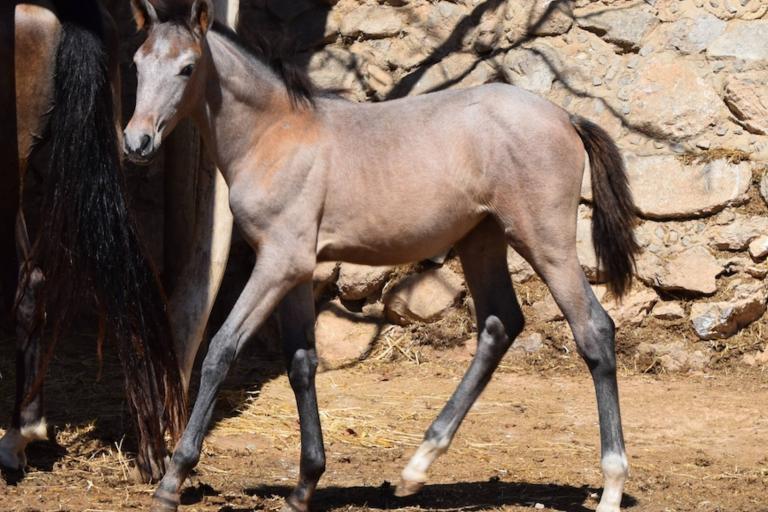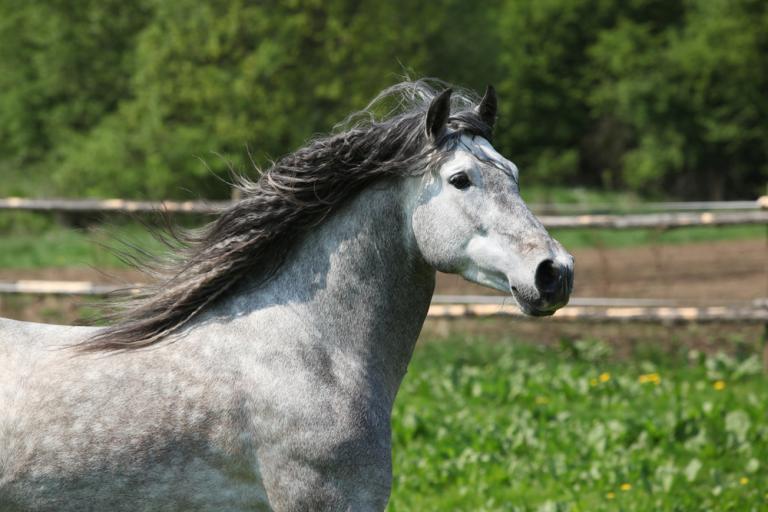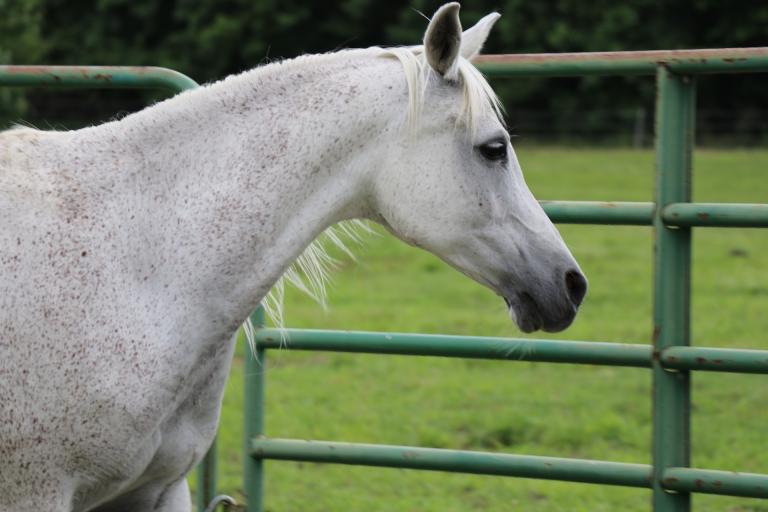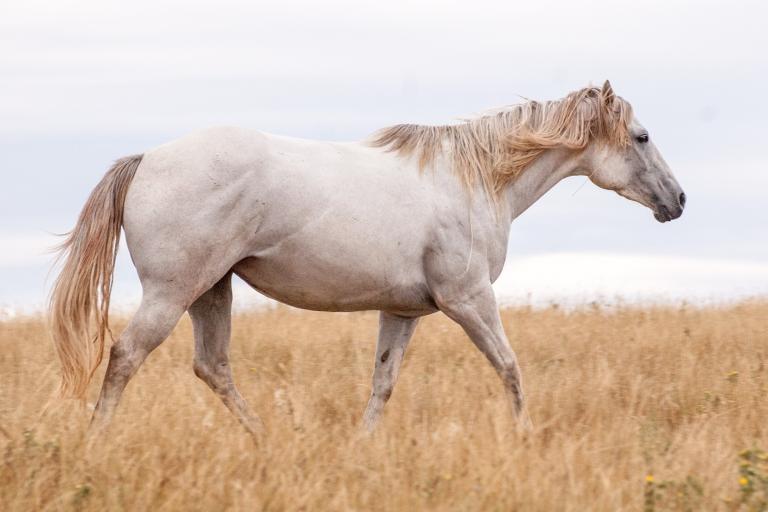Grey (Progressive Whitening Horse)
Due to the Grey mutation, normally coloured foals first turn grey and later white. They slowly "lose" their colour, as pigment-producing cells gradually stop to produce pigment and the hairs that grow back have less and less colour pigments and eventually none at all. Transitions patterns such as "dapple grey" and "flea-bitten" etc. develop.
The responsible gene (STX17) is involved in cancer pathways. The duplication that causes the grey colour also predisposes grey horses to developing melanoma.
General Information
- Grey horses are born normal coloured and slowly “lose” colour over time – they first go grey, and eventually white.
- At birth, foals that will go grey are often very intensely coloured (hyperpigmented).
- Grey is actually caused by a malfunction in the pigment cells. They produce intense pigment for a period of time, and essentially “burn out” over time and stop producing pigment.
- Horses with two copies of the grey variant (homozygous, G/G) progress more quickly than horses with one copy (heterozygous, n/G).
- Hairs have less and less, and at the end, no pigment. Horses will therefore go through different versions: dapple grey, flea-bitten, etc. These are all part of the progression towards white.
- Different breeds and different horses “grey out” at different speeds.
- After the greying process has started, it is often not possible to determine the original base color of the horse by looking at the remaining pigmented hairs.
Associated disease
Melanoma in grey horses
- The STX17 (grey) gene is involved in cancer pathways. The duplication that causes the grey color also predisposes grey horses to developing melanoma. It is estimated that approximately 85% of grey horses develop melanomas by the time they are 15 years old.
- Horses with two copies (G/G) of the grey variant will usually develop melanomas earlier in life than those with one copy.
Test Information
Lokus Informationen: G-Lokus
This test detects a large duplication in the STX17 gene. This test can determine if a horse has one or two copies of the grey variant.
Genotype and Lab Report
Inheritance: autosomal dominant
→ Horses with one or two copies of the grey mutation (n/G or G/G) will turn grey.
Genotype
n/n = No Grey mutation
Das Pferd behält seine Grundfarbe.
n/G = One copy of the Grey mutation
The horse will progressively go grey and finally completely white.
G/G = Two copies of the Grey mutation
The horse will progressively go grey and finally completely white. Because of two copies this process will progress more quickly than in horses with only one copy (n/G).
Appearance
Literatur
Rosengren Pielberg, G., Golovko, A., Sundstrom, E., Curik, I., Lennartsson, J., Seltenhammer, M.H., Druml, T., Binns, M., Fitzsimmons, C., Lindgren, G., Sandberg, K., Baumung, R., Vetterlein, M., Stromberg, S., Grabherr, M., Wade, C., Lindblad-Toh, K., Ponten, F., Heldin, C-H., Solkner, J., Andersson, L. : A cis-acting regulatory mutation causes premature hair graying and susceptibility to melanoma in the horse Nature Genetics 40:1004-1009, 2008. Pubmed reference: 18641652. DOI: 10.1038/ng.185.
Further information is available at Online Mendelian Inheritance in Animals.




